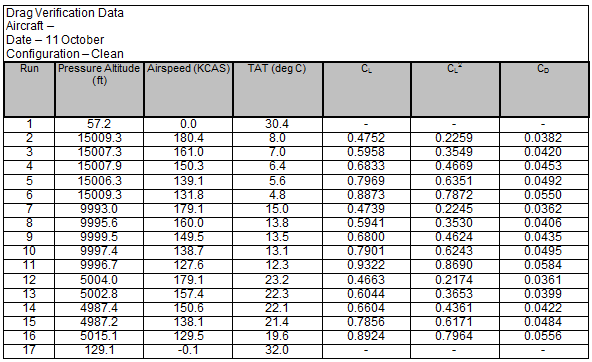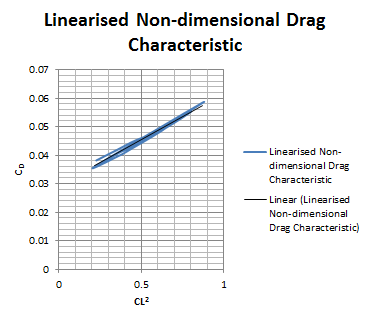I_love_aircraft
Aerospace
- Feb 16, 2017
- 6
Hi all,
So I am working on a project (Flight testing) which requires me to calculate the parasite drag of the aircraft. The following are the parameters provided:
1. Pressure altitude (feet)
2. Airspeed (KCAS)
3. TAT (degree Celsius)
4. CL (Lift coefficient)
5. CL Square
6. CD (Drag Coefficient)
Understand that the value of the parasite drag (CD0) can be obtained by plotting the drag polar curve (CL vs CD) and the minimum CD point at the left-most point on the plot, where the drag is locally independent of lift would be CD0. Example of a drag polar curve:
[highlight #EF2929]Question is only the data of CL and CD are being used to determine the parasite drag, are the other data (pressure altitude, airspeed and TAT) useful in determine the parasite drag?[/highlight] I know that air density decreases with increased altitude and that affects both the value for CL and CD. CL and CD also decrease as velocity increases. Since values of CL and CD are provided in this case, I am not sure if the value of both pressure altitude and airspeed are of any use.
Also since I am relatively new to flight testing, are there any recommendations or pointers that I would have to take note when conducting this experiment?
So I am working on a project (Flight testing) which requires me to calculate the parasite drag of the aircraft. The following are the parameters provided:
1. Pressure altitude (feet)
2. Airspeed (KCAS)
3. TAT (degree Celsius)
4. CL (Lift coefficient)
5. CL Square
6. CD (Drag Coefficient)
Understand that the value of the parasite drag (CD0) can be obtained by plotting the drag polar curve (CL vs CD) and the minimum CD point at the left-most point on the plot, where the drag is locally independent of lift would be CD0. Example of a drag polar curve:
[highlight #EF2929]Question is only the data of CL and CD are being used to determine the parasite drag, are the other data (pressure altitude, airspeed and TAT) useful in determine the parasite drag?[/highlight] I know that air density decreases with increased altitude and that affects both the value for CL and CD. CL and CD also decrease as velocity increases. Since values of CL and CD are provided in this case, I am not sure if the value of both pressure altitude and airspeed are of any use.
Also since I am relatively new to flight testing, are there any recommendations or pointers that I would have to take note when conducting this experiment?




